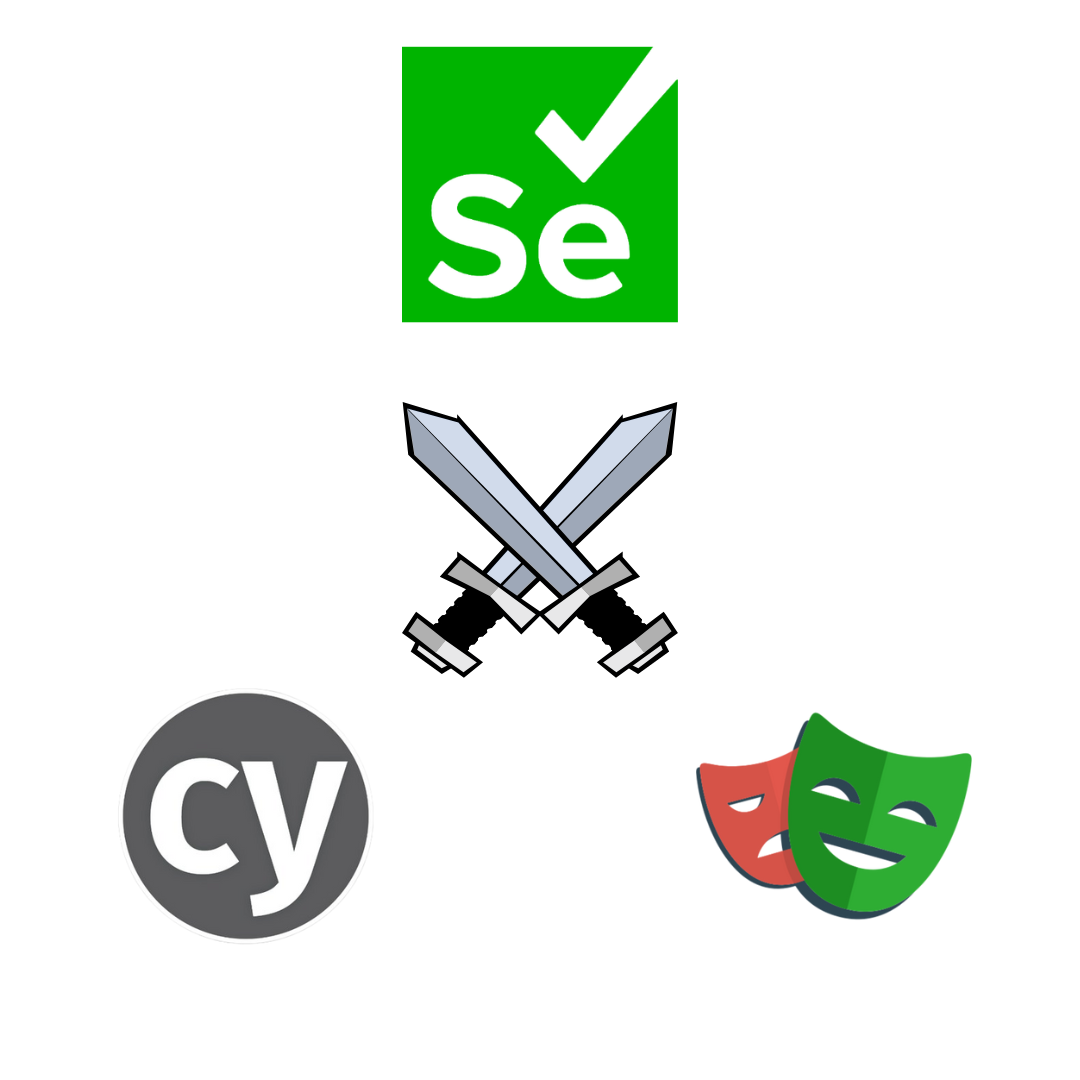Exploring Modern Web Testing Tools: Playwright, Cypress, and Selenium
Let's take a look at the top three contenders and what they offer.

In the ever-evolving landscape of web development, robust testing tools are essential for ensuring the reliability and performance of web applications. Among the plethora of available options, three tools stand out: Playwright, Cypress, and Selenium. In this article, we'll delve into the features and capabilities of each tool to help you make an informed decision for your testing needs.
import { test, expect } from "@playwright/test";
test("has title", async ({ page }) => {
await page.goto("https://playwright.dev/");
// Expect a title "to contain" a substring.
await expect(page).toHaveTitle(/Playwright/);
});
test("get started link", async ({ page }) => {
await page.goto("https://playwright.dev/");
// Click the get started link.
await page.getByRole("link", { name: "Get started" }).click();
// Expects page to have a heading with the name of Installation.
await expect(
page.getByRole("heading", { name: "Installation" })
).toBeVisible();
});Playwright emerges as a next-generation front-end testing tool built for the modern web. It offers a comprehensive suite of features designed to streamline the testing process and enhance test reliability.
- Cross-browser Support: Playwright supports all modern rendering engines, including Chromium, WebKit, and Firefox, ensuring seamless testing across different browsers.
- Cross-platform Compatibility: Whether testing locally or on CI, Playwright allows for testing on Windows, Linux, and macOS platforms, in both headless and headed modes.
- Cross-language Flexibility: Playwright's API is available in TypeScript, JavaScript, Python, .NET, and Java, catering to diverse developer preferences and skillsets.
- Resilient Testing: Playwright's auto-wait feature eliminates the need for artificial timeouts, reducing flakiness in tests. Web-first assertions and tracing capabilities further enhance test reliability.
describe("My Test", () => {
it("Gets, types and asserts", () => {
cy.visit("https://example.cypress.io");
cy.contains("type").click();
// Should be on a new URL which
// includes '/commands/actions'
cy.url().should("include", "/commands/actions");
// Get an input, type into it
cy.get("#email1").type("test@test.com");
// Verify that the value has been updated
cy.get("#email1").should("have.value", "test@test.com");
});
});Cypress as a cutting-edge front-end testing tool designed specifically for modern web applications. It offers a fundamentally different approach to testing, addressing key pain points faced by developers and QA engineers.
- Time Travel: Cypress captures snapshots as tests run, allowing users to hover over commands to see exactly what happened at each step.
- Debuggability: Developers can debug tests directly from familiar tools like Developer Tools, with readable errors and stack traces for lightning-fast issue resolution.
- Automatic Waiting: Cypress automatically waits for commands and assertions before moving on, eliminating the need for manual waits or sleeps and avoiding async hell.
- Spies, Stubs, and Clocks: Users can verify and control the behavior of functions, server responses, or timers, similar to unit testing.
from selenium import webdriver
from selenium.webdriver.common.keys import Keys
driver = webdriver.Chrome('./chromedriver')
driver.get("https://www.python.org")
print(driver.title)
search_bar = driver.find_element_by_name("q")
search_bar.clear()
search_bar.send_keys("getting started with python")
search_bar.send_keys(Keys.RETURN)
print(driver.current_url)
driver.close()Selenium is an umbrella project for a range of tools and libraries that enable and support the automation of web browsers. It offers a versatile toolset for web browser automation, with key features including:
- Browser Control: Selenium provides the capability to simulate common user activities such as entering text, selecting dropdown values, clicking links, and executing arbitrary JavaScript code.
- Common Interface: Selenium offers a common interface for interacting with different browser technologies, enabling code that executes seamlessly across multiple browsers.
- Scalability: Selenium empowers users to deploy testing grids across multiple machines, enabling continuous testing of web applications 24/7.
- Community Support: As an open-source project, Selenium relies on contributions from volunteers to keep pace with emerging web technologies and remain a dominant platform for functional test automation.
- Playwright: Offers multi-language support, enabling developers to write tests in TypeScript, JavaScript, Python, .NET, and Java.
- Cypress: Primarily supports JavaScript, limiting language flexibility compared to Playwright and Selenium.
- Selenium: Provides client libraries in multiple languages, including Java, Python, JavaScript, and C#, offering flexibility similar to Playwright.
- Playwright: Utilizes a modular architecture with browser-specific drivers for Chromium, WebKit, and Firefox.
- Cypress: Operates within the browser's JavaScript engine, offering fast and synchronous execution of commands.
- Selenium: Follows a client-server architecture, communicating with browser-specific drivers to control browser instances.
- Playwright: Offers advanced automation features such as device emulation, network interception, and cross-browser recording.
- Cypress: Provides built-in test runner, time-travel debugging, and automatic waits and retries for stable tests.
- Selenium: Supports cross-browser compatibility, extensive language support, and mature ecosystem for comprehensive testing.
In conclusion, Playwright, Cypress, and Selenium each offer unique features and capabilities tailored to streamline the testing process and ensure the reliability of modern web applications. Whether you're looking for advanced automation capabilities, intuitive debugging tools, or versatile browser compatibility, these tools have you covered. By understanding the strengths and weaknesses of each tool, you can choose the right one for your testing needs and elevate the quality of your web applications.
